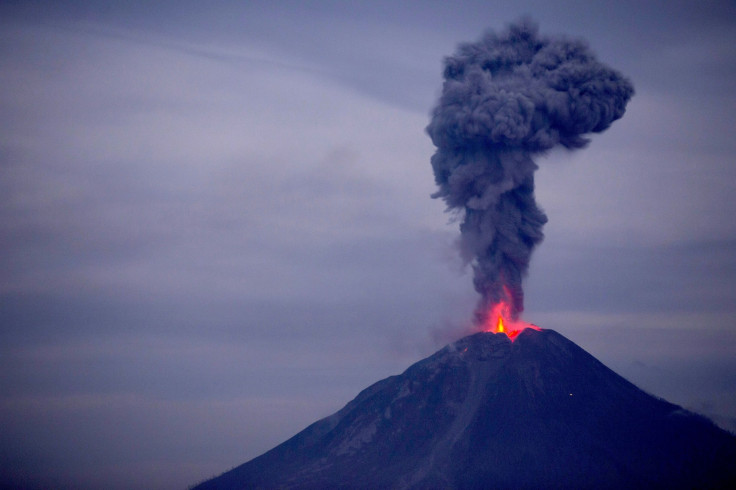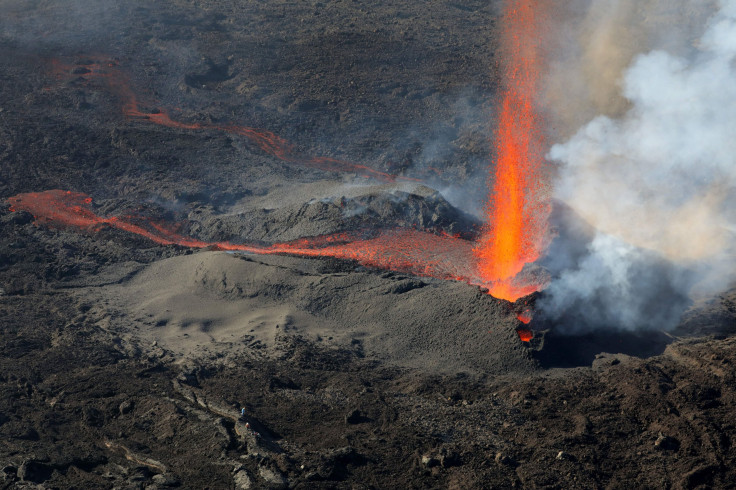Can Volcano Eruptions Be Predicted? Volcanic 'Whispers' Can Alert Scientists

Predicting when volcanoes will erupt is a tricky and imprecise business — but scientists are learning more about it all the time. Researchers at the University of Cambridge may have found another key indication of impending eruptions in the form of volcanic “whispers.”
In a study published Wednesday in the journal Scientific Advances, the team analyzed the slight noises volcanoes make when magma moves through them, when they begin to crack apart or when gases are released — collectively called a volcanic whisper. The whispers were formerly viewed by scientists as a single and comprehensive sound. But the study’s researchers found that by isolating them one at a time, they might be able to identify sounds that indicate an increase in internal pressure.
Read: When Will Yellowstone’s Supervolcano Erupt? Park Hit By 878 Earthquakes In 2 Weeks
The researchers found that when the whispers coming from inside the volcano sped up, the portion of the volcano causing the whisper began moving and swelling. In turn, by studying four years worth of data from the world’s most active volcano, Hawaii’s Kilauea, they found that the emergence of whispers and the size of the swelling in the volcano were strongly correlated.

The whispers and bulging inside the volcano coincided with the increase in pressure that precedes a massive volcanic eruption, according to the study. The scientists found that the immensity of the whispers might be able to point to the beginnings of an immense eruption, a potentially ground-breaking new tool for predicting volcanic eruptions.
While there’s no way to stop a volcanic eruption, predicting when an especially violent one might occur could be instrumental in saving lives. Scientists around the world are constantly monitoring volcanoes for imminent eruption by observing ground movement, the chemistry of rocks and water and using satellites. The United States Geological Survey’s Volcano Hazards Program is dedicated to detecting any signs of change that might forewarn of a “volcanic reawakening.”
But predicting when volcanoes will erupt isn’t a sure thing.
“Volcanologists can only offer probabilities that an event will occur,” said Peter Tyson in an article for PBS’s NOVA. “They can never be sure how severe a predicted eruption will be, or for that matter, whether it will even break the surface.”
Scientific advances in the area of predicting volcanic eruption have proven useful and life-saving. During the Mount St. Helens eruption in 1980, the U.S. Forest Service was able to warn of an imminent eruption and evacuate people efficiently, saving an estimated 20,000 lives.
Read: Mount Etna Eruption Caught On Video
Using techniques like the researchers’ volcanic whispers might be useful to scientists studying particularly dangerous volcanoes like the super caldera at Yellowstone. Scientists at the Yellowstone Volcano Observatory continuously monitor the area for any sudden shifts or other indications of an impending eruption— one that could devastate the surrounding area. Anything that could make their predictions more precise could ultimately prove invaluable should a massive eruption occur.

© Copyright IBTimes 2024. All rights reserved.






















